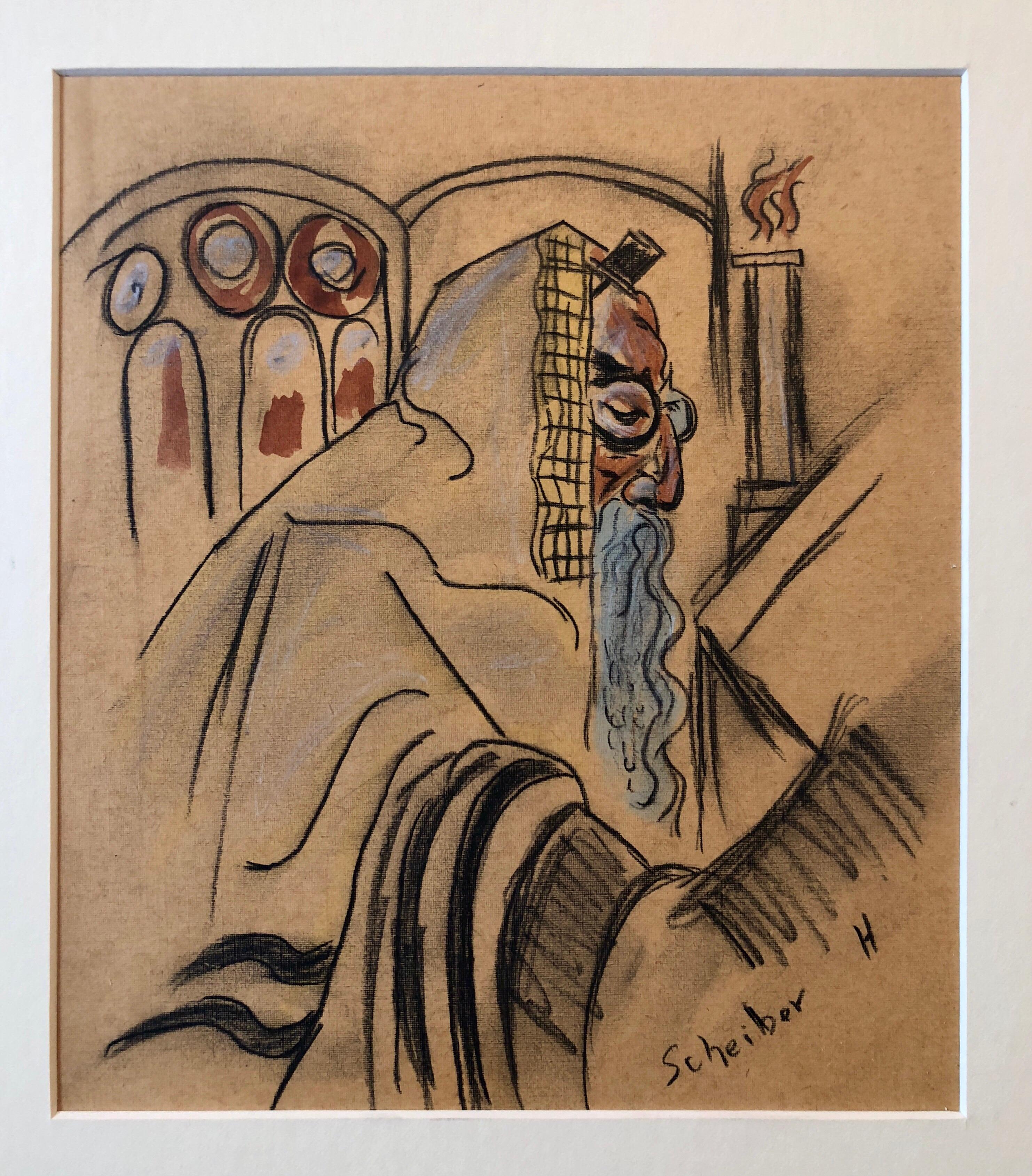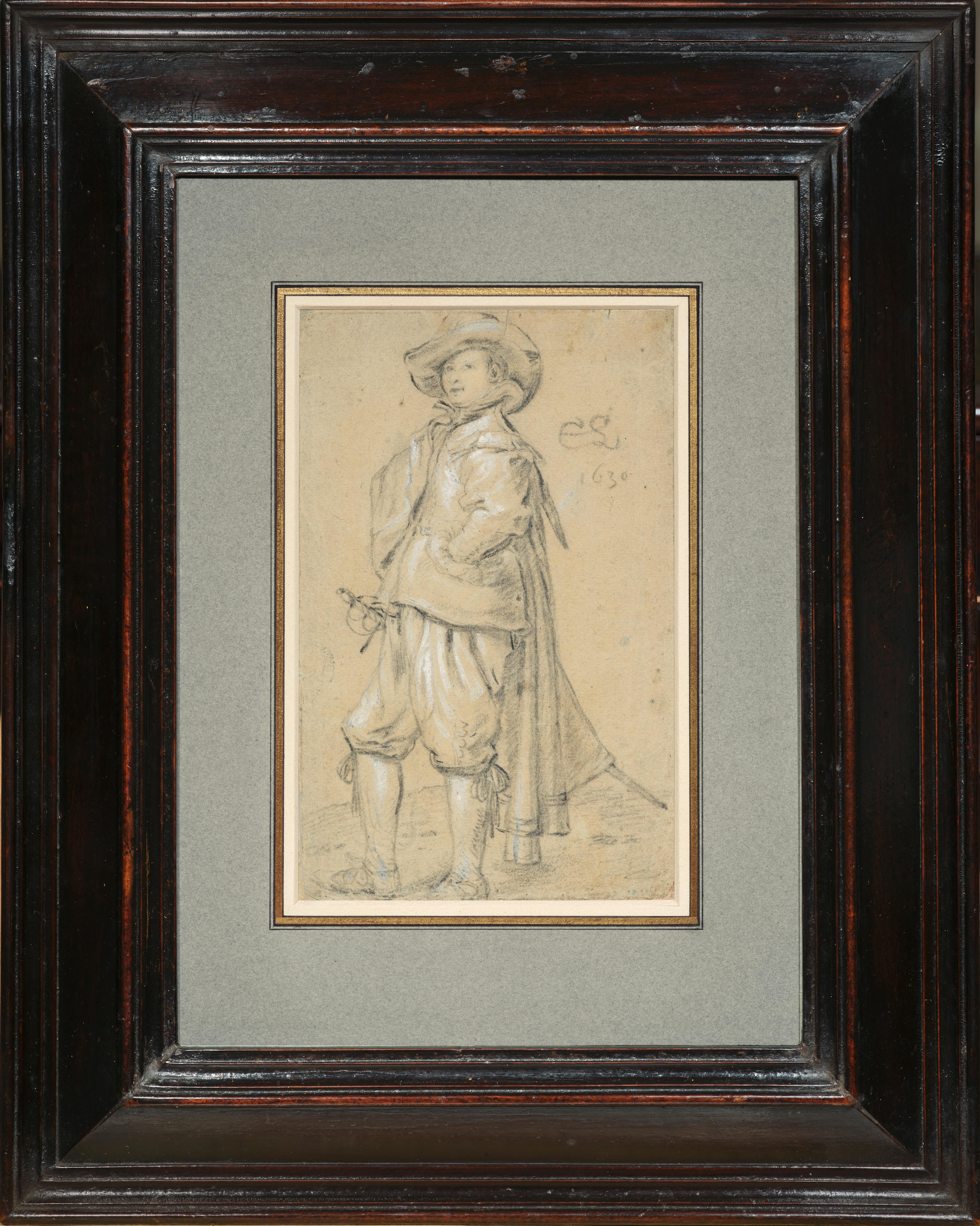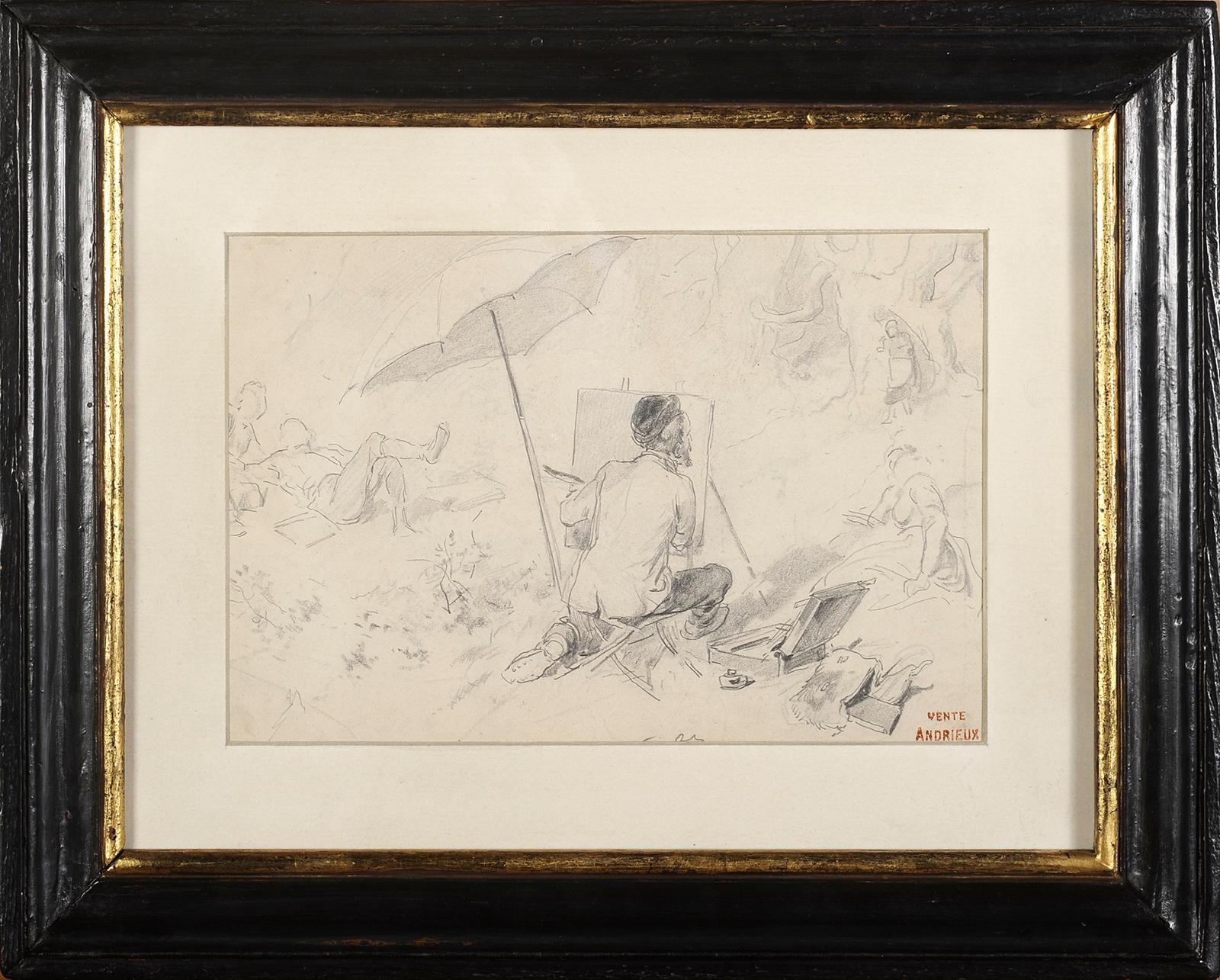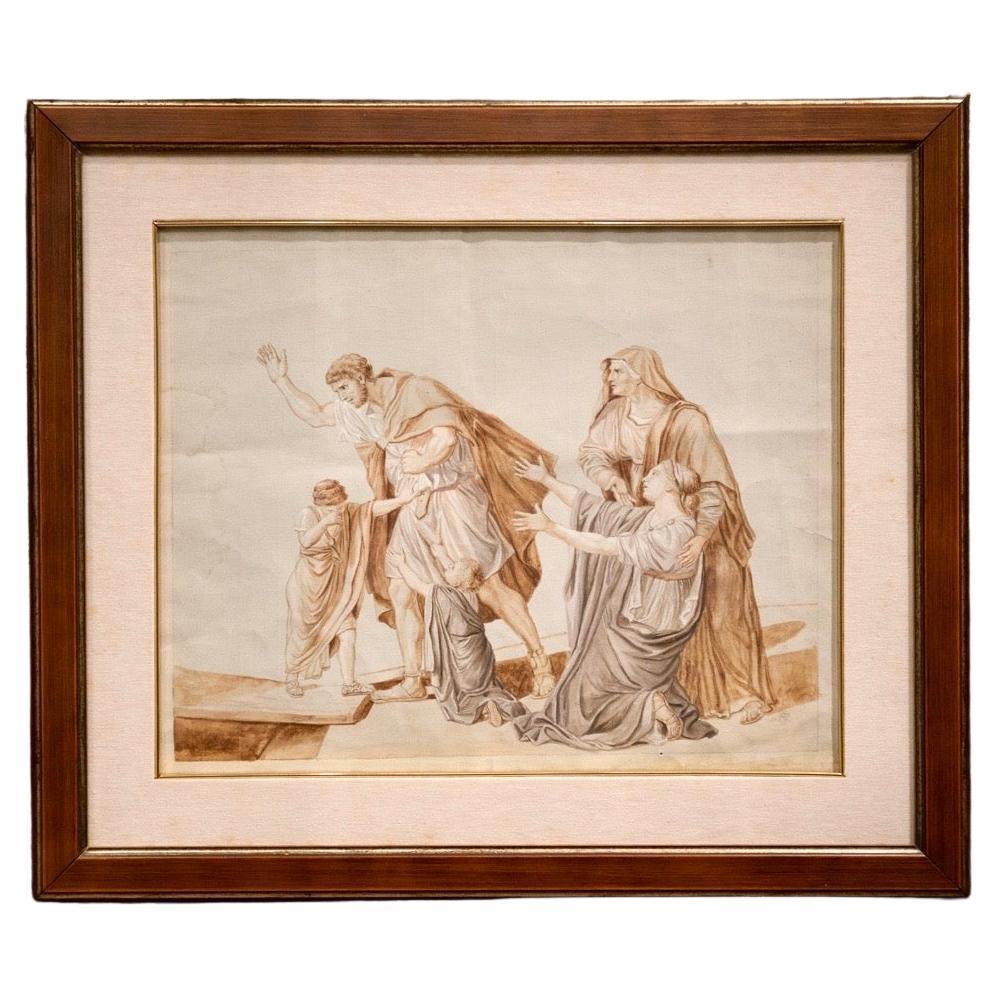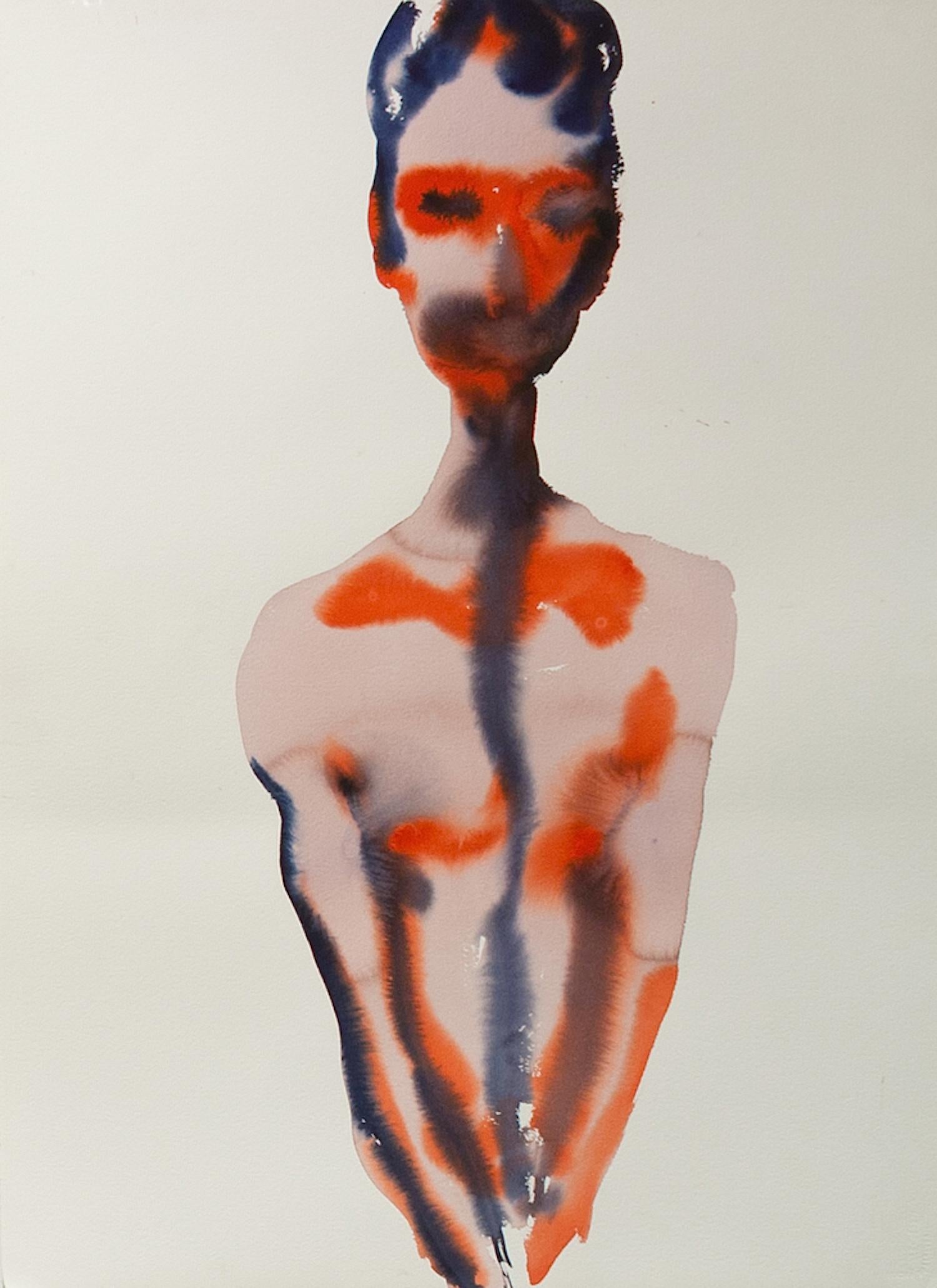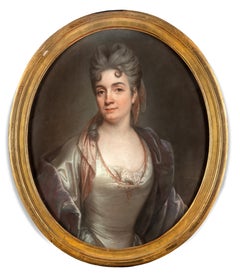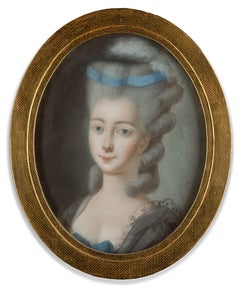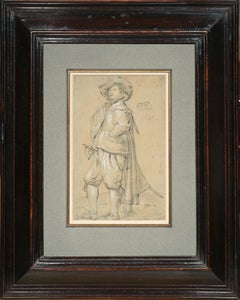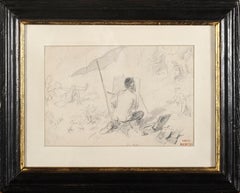Items Similar to Rococo Portait, French Rococo, Marie Baudouin, Daughter of Francois Boucher
Want more images or videos?
Request additional images or videos from the seller
1 of 17
Rococo Portait, French Rococo, Marie Baudouin, Daughter of Francois Bouchercirca 1758
circa 1758
On Hold
$8,470.58
$21,176.4560% Off
On Hold
£6,445.85
£16,114.6260% Off
On Hold
€7,200
€18,00060% Off
On Hold
CA$11,868.02
CA$29,670.0460% Off
On Hold
A$12,925.16
A$32,312.9160% Off
On Hold
CHF 6,814.99
CHF 17,037.4760% Off
On Hold
MX$157,207.29
MX$393,018.2260% Off
On Hold
NOK 85,698.19
NOK 214,245.4760% Off
On Hold
SEK 80,377.90
SEK 200,944.7460% Off
On Hold
DKK 54,839.77
DKK 137,099.4360% Off
About the Item
Portrait of the daughter of Francois Boucher, Marie-Emilie Baudouin, holding a basket of flowers. Pastel on Parchment. The work is related to an oval portrait painting by Francois Boucher of his daughter, holding a little bird. (75.5 cm x 65 cm, Musée Cognacq-Jay). The daughter married in 1758 and this portrait may be drawn as a marriage gift.
The pastel is of very fine quality and is framed, behind glas, with a 18th century golden frame.
- Creation Year:circa 1758
- Dimensions:Height: 14.97 in (38 cm)Width: 12.21 in (31 cm)
- Medium:
- Movement & Style:
- Circle Of:François Boucher (1703 - 1770, French)
- Period:
- Condition:
- Gallery Location:Greven, DE
- Reference Number:1stDibs: LU155028129032
About the Seller
4.8
Vetted Professional Seller
Every seller passes strict standards for authenticity and reliability
Established in 2011
1stDibs seller since 2021
30 sales on 1stDibs
Typical response time: 6 hours
- ShippingRetrieving quote...Shipping from: Greven, Germany
- Return Policy
Authenticity Guarantee
In the unlikely event there’s an issue with an item’s authenticity, contact us within 1 year for a full refund. DetailsMoney-Back Guarantee
If your item is not as described, is damaged in transit, or does not arrive, contact us within 7 days for a full refund. Details24-Hour Cancellation
You have a 24-hour grace period in which to reconsider your purchase, with no questions asked.Vetted Professional Sellers
Our world-class sellers must adhere to strict standards for service and quality, maintaining the integrity of our listings.Price-Match Guarantee
If you find that a seller listed the same item for a lower price elsewhere, we’ll match it.Trusted Global Delivery
Our best-in-class carrier network provides specialized shipping options worldwide, including custom delivery.More From This Seller
View AllFrench Art, Rococo, Portrait Queen Marie Antoinette France, Oval, Circle Vivien
Located in Greven, DE
French School, Portrait of Queen Marie Antoinette of France, Pastel /oil Pastel on Paper, Rococo, 18th Century. The Pastel is made in the style...
Category
18th Century Rococo Portrait Drawings and Watercolors
Materials
Paper, Pastel, Oil
$5,882 Sale Price
75% Off
Portrait Old Master, Joseph Vivien, Mme Silvestre, French Rococo, Pastel
By Joseph Vivien
Located in Greven, DE
The portrait shows Mme Silvestre.
Born in Paris, Silvestre was the daughter of Charles-Antoine Hérault and his wife Marie-Geneviève, who were her first teachers. In 1706 she married the painter Louis de Silvestre, moving with him in 1716 to Dresden. The couple's daughter Marie-Maximilienne became a pastellist. Silvestre died in Dresden, the year before her husband retired and returned to Paris. Her surviving pastels show the influence of Rosalba Carriera...
Category
18th Century Rococo Portrait Paintings
Materials
Oil Pastel, Gouache
French Art, Rococo Portrait, Oval, Pastel, Portrait of a Lady, Circle of Vivien
Located in Greven, DE
French School, Portrait of a Lady, Rococo, 18th Century, Fine drawing in Pastel/ Oil Pastel on Paper in the style of Vivien. The Lady might be a woman from Marie Antoinette's Court. It is part of a Pendant (see the other listing with the portrait of Queen Marie Antoinette...
Category
18th Century Rococo Portrait Drawings and Watercolors
Materials
Paper, Oil Pastel, Gouache
$6,588 Sale Price
72% Off
German Female Artist, Study or Portrait of a Girl, Expressionism, Realism
Located in Greven, DE
Helene Rutkowski is an artist who was born in 1862. The maker's first piece to be offered at auction was "Baumbestandene Allee im Herbst" at Quentin Auction House in 2021.
She worked in the style of Realism and Expressionism and her works remind one of Käthe Kollwitz.
This beautiful drawing...
Category
20th Century Realist Portrait Drawings and Watercolors
Materials
Charcoal, Handmade Paper
Trompe l'oeil, Trick of the Eye, Maria, Child St. Anthony, Van Dyck, Old Master
Located in Greven, DE
After a copper engraving (46 x 34 cm) by Gilles Rousselet after Van Dyck, ca. 1640 Paris.
Oil on cardboard, 44 x 35 cm
Trompe-l'oeils are pictures whose depicted objects are painte...
Category
18th Century Rococo Figurative Paintings
Materials
Oil
$8,382 Sale Price
25% Off
French School, Portrait of a Lady, Actress, Young Woman, French , Rococo, Oval
Located in Greven, DE
French Art
Rococo
Portrait of a Woman, Young Lady, perhaps an actress
Category
18th Century Rococo Figurative Paintings
Materials
Canvas
You May Also Like
Sit woman pastel drawing
By Rafael Duran Benet
Located in Sitges, Barcelona
Rafael Duran Benet (1931-2015) - Sit woman - Pastel
Drawing measurements 62x42 cm.
Frame measurements 82x62 cm.
Rafael Duran Benet (Terrassa, 1931 - Barcelona, 2015) is a Catalan painter...
Category
1970s Post-Impressionist Portrait Drawings and Watercolors
Materials
Pastel
$352 Sale Price
50% Off
Rare Modernist Hungarian Rabbi Pastel Drawing Gouache Painting Judaica Art Deco
By Hugó Scheiber
Located in Surfside, FL
Rabbi in the synagogue at prayer wearing tallit and tefillin.
Hugó Scheiber (born 29 September 1873 in Budapest – died there 7 March 1950) was a Hungarian modernist painter.
Hugo Scheiber was brought from Budapest to Vienna at the age of eight where his father worked as a sign painter for the Prater Theater. At fifteen, he returned with his family to Budapest and began working during the day to help support them and attending painting classes at the School of Design in the evening, where Henrik Papp was one of his teachers. He completed his studies in 1900. His work was at first in a post-Impressionistic style but from 1910 onward showed his increasing interest in German Expressionism and Futurism. This made it of little interest to the conservative Hungarian art establishment.
However, in 1915 he met the great Italian avant-gardist Filippo Tommaso Marinetti and the two painters became close friends. Marinetti invited him to join the Futurist Movement. The uniquely modernist style that he developed was, however, closer to German Expressionism than to Futurism and eventually drifted toward an international art deco manner similar to Erté's. In 1919, he and his friend Béla Kádar held an exhibition at the Hevesy Salon in Vienna. It was a great success and at last caused the Budapest Art Museum to acquire some of Scheiber's drawings. Encouraged, Scheiber came back to live in Vienna in 1920.
A turning point in Scheiber's career came a year later, when Herwarth Walden, founder of Germany's leading avant-garde periodical, Der Sturm, and of the Sturm Gallery in Berlin, became interested in Scheiber's work. Scheiber moved to Berlin in 1922, and his paintings soon appeared regularly in Walden's magazine and elsewhere. Exhibitions of his work followed in London, Rome, La Paz, and New York.
Scheiber's move to Germany coincided with a significant exodus of Hungarian artists to Berlin, including Laszlo Moholy-Nagy and Sandor Bortnyik. There had been a major split in ideology among the Hungarian avant-garde. The Constructivist and leader of the Hungarian avantgarde, Lajos Kassák (painted by Hugó Scheiber in 1930) believed that art should relate to all the needs of contemporary humankind. Thus he refused to compromise the purity of his style to reflect the demands of either the ruling class or socialists and communists. The other camp believed that an artist should be a figurehead for social and political change.
The fall out and factions that resulted from this politicisation resulted in most of the Hungarian avant gardists leaving Vienna for Berlin. Hungarian émigrés made up one of the largest minority groups in the German capital and the influx of their painters had a significant effect on Hungarian and international art. Another turning point of Scheiber's career came in 1926, with the New York exhibition of the Société Anonyme, organized by Katherine Dreier. Scheiber and other important avant garde artists from more than twenty-three countries were represented. In 1933, Scheiber was invited by Marinetti to participate in the great meeting of the Futurists held in Rome in late April 1933, Mostra Nazionale d’Arte Futurista where he was received with great enthusiasm. Gradually, the Hungarian artists began to return home, particularly with the rise of Nazism in Germany. Kádar went back from Berlin in about 1932 and Scheiber followed in 1934.
He was then at the peak of his powers and had a special flair in depicting café and cabaret life in vivid colors, sturdily abstracted forms and spontaneous brush strokes. Scheiber depicted cosmopolitan modern life using stylized shapes and expressive colors. His preferred subjects were cabaret and street scenes, jazz musicians, flappers, and a series of self-portraits (usually with a cigar). his principal media being gouache and oil. He was a member of the prestigious New Society of Artists (KUT—Képzőművészek Új Társasága)and seems to have weathered Hungary's post–World War II transition to state-communism without difficulty. He continued to be well regarded, eventually even receiving the posthumous honor of having one of his images used for a Russian Soviet postage stamp (see image above). Hugó Scheiber died in Budapest in 1950.
Paintings by Hugó Scheiber form part of permanent museum collections in Budapest (Hungarian National Museum), Pecs (Jannus Pannonius Museum), Vienna, New York, Bern and elsewhere. His work has also been shown in many important exhibitions, including:
"The Nell Walden Collection," Kunsthaus Zürich (1945)
"Collection of the Société Anonyme," Yale University Art Gallery, New Haven, Connecticut (1950)
"Hugó Scheiber: A Commemorative Exhibition," Hungarian National Museum, Budapest (1964)
"Ungarische Avantgarde," Galleria del Levante, Munich (1971)
"Paris-Berlin 1900-1930," Centre Georges Pompidou, Paris (1978)
"L’Art en Hongrie, 1905-1920," Musée d’Art et l’Industrie, Saint-Etienne (1980)
"Ungarische Avantgarde in der Weimarer Republik," Marburg (1986)
"Modernizmus," Eresz & Maklary Gallery, Budapest (2006)
"Hugó Scheiber & Béla Kádár," Galerie le Minotaure, Paris and Tel Aviv (2007)
Hugó Scheiber's paintings continue to be regularly sold at Sotheby's, Christie's, Gillen's Arts (London), Papillon Gallery (Los Angeles) and other auction houses.
He was included in the exhibition The Art Of Modern Hungary 1931 and other exhibitions along with Vilmos Novak Aba, Count Julius Batthyany, Pal Bor, Bela Buky, Denes Csanky, Istvan Csok, Bela Czobel, Peter Di Gabor, Bela Ivanyi Grunwald, Baron Ferenc Hatvany, Lipot Herman, Odon Marffy, C. Pal Molnar...
Category
Early 20th Century Modern Figurative Paintings
Materials
Paper, Charcoal, Pastel, Watercolor, Gouache
Young Man with a Sword, a Fist on his Hip, a drawing by Cornelis Saftleven
Located in PARIS, FR
Black chalk and white highlights on paper (originally washed in blue)
Monogrammed and dated 1630 on the right
This drawing, executed in black chalk and enhanced with white brushwor...
Category
1630s Old Masters Portrait Drawings and Watercolors
Materials
Paper, Chalk
The outdoor painter
Located in BELEYMAS, FR
Clément Auguste Andrieux
(Paris 1829 – Samois-sur-Seine 1880)
The Open-Air Painter
Graphite on paper
H. 16.5 cm; W. 24.5 cm visible
Sale stamp lower right
Provenance: Studio sale, 1...
Category
1870s French School Portrait Drawings and Watercolors
Materials
Paper
Follower Jacques-Louis David Neoclassical Red Chalck French Paper
Located in Roma, IT
Important period red chalck watercolor pencil drawing with neoclassical subject.
Depicting the Atilius Regulus departing for Carthage.
Atilius Regulus was a Roman statesman taken pri...
Category
Early 19th Century Old Masters Portrait Drawings and Watercolors
Materials
Paper, Chalk
Self Portrait 02 - Modern Figurative Watercolor Painting, New Expressionism
By Maciej Olekszy
Located in Salzburg, AT
The artwork on paper will be sent unframed to you.
Maciej Olekszy was born in 1982, Poland. Graduated from the Academy of Fine Arts in Poznan, Poland in 2007. Faculty of Painting i...
Category
2010s Contemporary Figurative Paintings
Materials
Paper, Watercolor
More Ways To Browse
18th Century French Rococo Painting
Antique Oval Portrait
18th Century French Portraits
Portrait Daughter
Boucher Painting
18th Century Pastel
French Pastel Portraits
Oval Portrait Paintings
18th Century Pastel Portrait
18th French Pastel Portrait
Unique Paintings
Large Landscape Oil On Canvas
20th Century American Landscape Paintings
20th Century Landscape Painting American
Vintage Kennedy
Large Framed Oil Paintings Signed
Chromogenic Prints
French Impressionists Oil On Canvas
